Harry Potter has devoured entire childhoods, swallowed adolescences whole. Not to mention swathes of many a middle age. There are those of us who have read all 2,765,421 words (I checked) of the seven-part saga out loud to their children. Adults who would sooner use diminishing brain-cell capacity to store more pertinent information can tell you who teaches Muggle Studies at Hogwarts, the uses of gillyweed and the difference between a grindylow and a blast-ended skrewt. There is of course nothing more to be said. Review Harry Potter? You might as well review global warming, or Bill Gates’s balance sheet. You might as well award stars to jihadism. It exists. It is. And it is what it is. And so it goes on (and on).
At Harry Potter and the Deathly Hallows: Part 1 I sat next to someone who, not having visited the print element of the franchise, had in the time lag between the last instalment and this carelessly forgotten what a horcrux is. Film has never yet so closely aped the structure of television drama, only the episodes come not once a week but once a year. No wonder David Yates, a TV director without a single notable film on his CV, was hired to bring the last four films home. Shrewd move. Much shrewder than getting Chris Columbus, director of Home Alone, to make a pig’s ear of the first two. The series really picked up only when Alfonso Cuarón, director of Y tu mamá también, took over on Harry Potter and the Prisoner of Azkaban. (He got lucky, of course: book three is the most satisfying and cleverly worked of J K Rowling’s seven plots.)
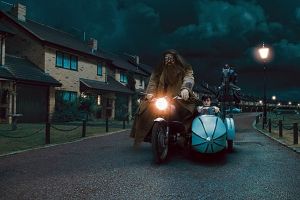 Anyway, seven films down. We are nearly there. This is that very odd thing, a series within a series. George Lucas made three (terrible) prequels to Star Wars. The Godfather’s middle film was all back story. With The Deathly Hallows, they’ve just gone and chopped the book in two, as if with one fell swipe from the Sword of Gryffindor. It has Rowling's endorsement: she has said it's her favourite film so far, perhaps because Steve Kloves, who is once more on adapting duties, has found fresh narrative vistas. But it sounds on the face of it like a dangerous ploy. Hollywood may be immune to accusations of commercial cynicism. Still, surely no story can naturally divide and multiply without cost?
Anyway, seven films down. We are nearly there. This is that very odd thing, a series within a series. George Lucas made three (terrible) prequels to Star Wars. The Godfather’s middle film was all back story. With The Deathly Hallows, they’ve just gone and chopped the book in two, as if with one fell swipe from the Sword of Gryffindor. It has Rowling's endorsement: she has said it's her favourite film so far, perhaps because Steve Kloves, who is once more on adapting duties, has found fresh narrative vistas. But it sounds on the face of it like a dangerous ploy. Hollywood may be immune to accusations of commercial cynicism. Still, surely no story can naturally divide and multiply without cost?
On the other hand you can argue that the last three films have already been doing that. Ever since Harry Potter and the Goblet of Fire heralded the return of You Know Who, both book and film went into a holding pattern which can end only when The Boy Who Lived deals the mortal blow. (Sorry, but after years in its company one involuntarily colludes in Rowlingian terminology.) The films have been getting more spectacular under Yates’s direction – there are stylistic nods here to Terry Gilliam’s Brazil, to Fritz Lang’s Metropolis, as well as a clump of sepia-tinted war movies in an early flight sequence - but they have never felt wholly satisfying as narrative because gratification must be repeatedly deferred.
The previous instalments all had a basic structural thing going for them whatever the extent of galloping word bloat: bookended by the beginning and end of the school year, like a disciplined football team they kept their shape. For The Deathly Hallows, J K Rowling takes her final-year pupils out of Hogwarts and sends them wandering around the country dodging Snatchers and Death Eaters while hunting the horcruxes in which Voldemort’s soul is severally stored. The terminal scene change is signposted in an opening sequence in which Harry and Hermione, preparing for war, finally put away childish things: Harry abandons Privet Drive (by flying motorbike, driven by Robbie Coltrane's Hagrid, pictured above), while Hermione wipes herself from her parents’ memories. It’s all rather moving.
One of the great pleasures of this new film is escaping the Leavesden soundstage and the various interior locations that have become the film’s all too familiar home. This is Harry Potter the road movie. Fresh air and open space abound. There’s more of London here (including a lovely little scene in a regular café where Harry and Ron have no idea how to order a muggle drink). There’s much more landscape, most of it parched and wintry under lowering skies, than in any previous film (pictured below: Daniel Radcliffe and Emma Watson in the great British outdoors). The shots of leafless forests, gloomy mountain lakes, frosty moors and, climactically, a deserted windswept beach look like a product placement arranged by the UK tourist board. You can see the posters of Pembrokeshire and Burnham Beeches on metro stations around the world with the come-hither strapline: "Visit Potterland!"
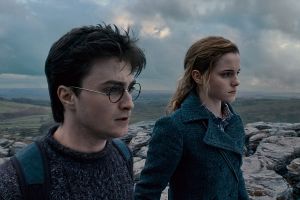 There are downsides though. Kloves has the task of capturing the sense of aimlessness and drift of the final book’s plot without allowing the narrative to be somehow infected by it. What can you say? Between all the obligatory whizzes and bangs, much of the film drags perceptibly. The Christmas visit to the half-timbered village where Harry was born, for example, feels a lot longer on atmospherics than exposition.
There are downsides though. Kloves has the task of capturing the sense of aimlessness and drift of the final book’s plot without allowing the narrative to be somehow infected by it. What can you say? Between all the obligatory whizzes and bangs, much of the film drags perceptibly. The Christmas visit to the half-timbered village where Harry was born, for example, feels a lot longer on atmospherics than exposition.
The other danger of throwing Harry, Hermione and Ron back on their own resources is that, as never before, the three lead actors are required to carry the film. Yes, they’re adults now, but even for actors who’ve grown up on screen, it’s asking a great deal. For one long section, when Ron (Rupert Grint) storms off in a jealous huff, Daniel Radcliffe and Emma Watson are left to hold the thespian fort (actually a capacious tent). To fill the time they even dance. “Maybe we should just stay here, Harry”, says Hermione when they’re getting nowhere, “and grow old.” Please. No.
They are exposed in a different way in a wonderful section which finds the three of them breaking into the Ministry of Magic in disguise. Each downing a transmogrifying draft of Polyjuice Potion, they morph into other characters. There is an unintended consequence of handing over their roles to older actors. Sophie Thompsonas Hermione in disguise is a particular treat.
As for the regular procession of thesps, no one is on screen for more than five minutes, not even Ralph Fiennes who, always most comfortable in the skin of unfathomable outsiders, was born to play Voldemort. He’ll get to wave his wand, here retrieved at the death from Dumbledore’s grave, next summer. As the old stagers leave the screen (Michael Gambon appears as a corpse), other dependable character actors are sprinkled about the place like scatter cushions. That’s Rhys Ifans being deranged under a white fright wig. A big hello (and goodbye) to Bill Nighy (pictured below), deploying an intriguing Welsh-ish accent as the new Minister of Magic. It’s deeply odd to see an actress of Helen McCrory’s standing struck dumb by her character’s lack of lines. As ever the show is thoroughly stolen by Helena Bonham Carter vamping it up as Bellatrix Lestrange.
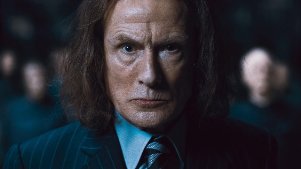 But across two-and-a-half hours, even these cameo turns, even an ambience of looming crisis as we edge towards the endgame, are not enough to distract from the sense of a pantechnicon slamming on the breaks. It’s no coincidence that the film’s loveliest treat is a beautifully animated sequence illustrating the story of the Deathly Hallows. It’s visual refreshment; it’s something new to look at.
But across two-and-a-half hours, even these cameo turns, even an ambience of looming crisis as we edge towards the endgame, are not enough to distract from the sense of a pantechnicon slamming on the breaks. It’s no coincidence that the film’s loveliest treat is a beautifully animated sequence illustrating the story of the Deathly Hallows. It’s visual refreshment; it’s something new to look at.
As is now routine, the film ends with another death. Depending on the level of your investment in Rowling’s world, the impact should offer a big enough emotional hit to tide you over till Harry Potter and the Deathly Hallows: Part 2. Others may recall Oscar Wilde’s response to the death of Little Nell. Still, we’re getting there, ever so slowly. Are we all coming down with Potter fatigue? Not yet. Not quite. But audiences have been toyed with enough. And the climactic crash of a major chord can't come soon enough.
Watch the Harry Potter and the Deathly Hallows trailer

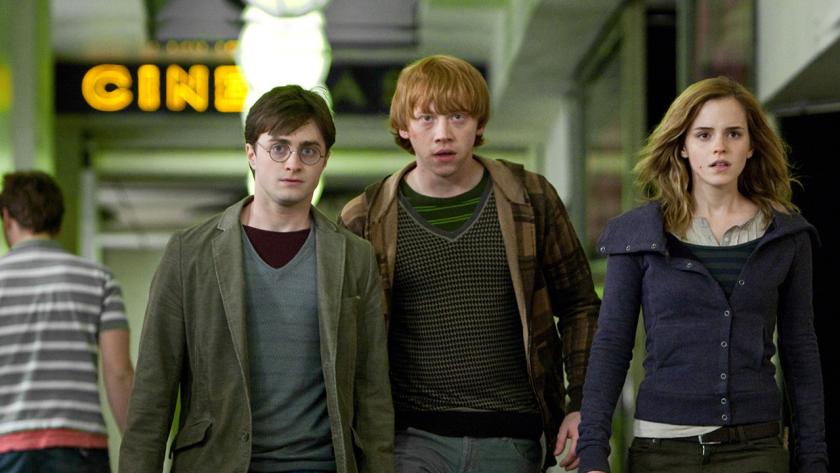

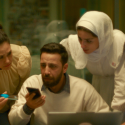
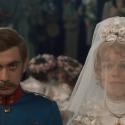
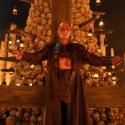

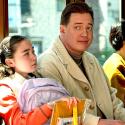

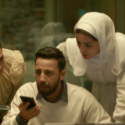





Add comment